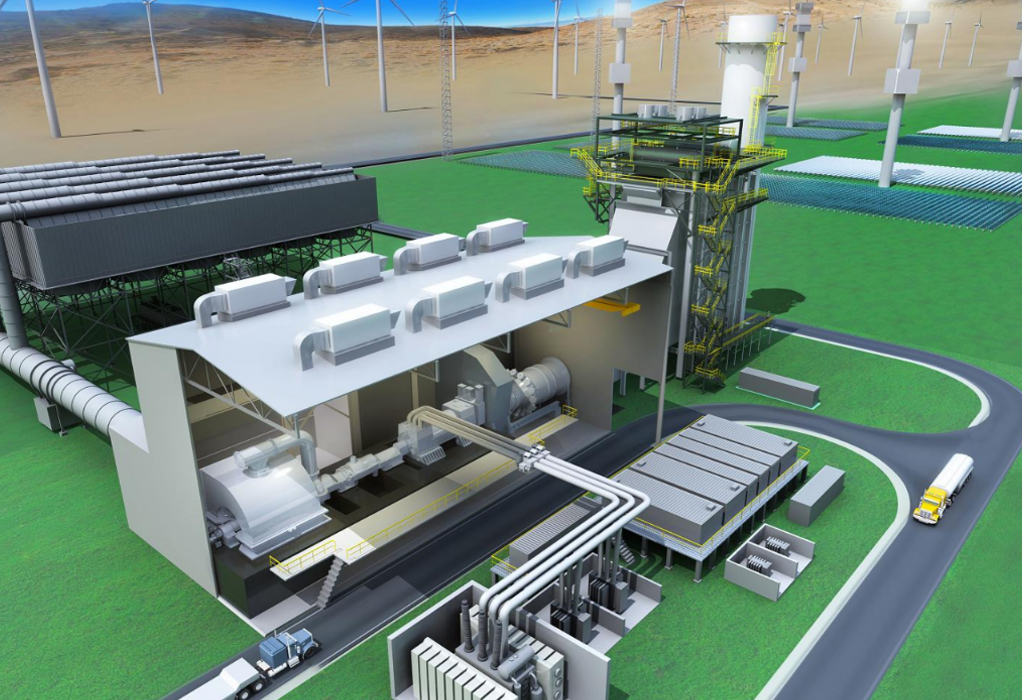South Korea’s move to include LNG in its taxonomy for green fuels will buy the country more time to transition to a net zero economy and help allay immediate concerns about energy security given its heavy dependence on gas for power generation.
Government officials said that Seoul will prioritize the reduction of coal consumption for power generation and seek to phase out coal by 2050, due to its higher carbon footprint and contribution to air pollution.
This leaves more breathing room for natural gas. South Korea depends on coal for around 40% of its electricity generation, while LNG-fired power plants are responsible for around 25% and nuclear reactors around 30% of demand, with the remaining coming from renewables.
The classification of natural gas as a green fuel has been a bone of contention in gas dependent economies in Asia and Europe, and recent debate has centered around energy security concerns with the ongoing energy crisis and record-high prices, and calls for reduction in the fossil fuel investments.
For South Korea, the long-term energy plan under previous administrations had been to replace nuclear and coal with gas and renewables, but net zero roadmaps proposed by the government in 2021 around COP26 had laid out options for further reductions to gas-fired power.
The taxonomy change will have an impact on green finance, the future course of carbon taxes/emissions caps, the decommissioning pathway of coal-fired plants and future energy mix. While the duration of this classification is still uncertain, it is being watched by supply-side investors in LNG projects as South Korea remains one of the world’s largest LNG importers.
K-Taxonomy
The Ministry of Environment published guidelines on the so-called “K-taxonomy” in the first week of January, presenting principles and standards concerning environmentally-friendly economic activity.
The guidelines included LNG in the green category, while excluding nuclear energy, despite protests by civic groups which describe natural gas as a fossil fuel, accusing the government of it “greenwashing.”
The ministry decided to classify LNG as a green fuel temporarily, given heavy dependence on coal in electricity generation and energy-intensive industries, an environmental ministry official told S&P Global Platts on Jan. 7. “In reality, LNG is needed for the country to reduce coal-based power production and achieve the energy transition toward cleaner fuels,” he said.
“Coal’s share of 40% in South Korea is well higher than 24% in the US, 32% in Japan and 30% in Germany, which has forced South Korea to make all-out efforts to reduce coal power production,” the official said. Gas, meanwhile, is the third-largest fuel source after coal and oil in the country’s total primary energy mix, accounting for less than 20% of total fuel consumption.
The green category also includes the use of LNG for making blue hydrogen, and captures carbon dioxide emissions through carbon capture technologies, that is seeing a huge push from South Korean industrial conglomerates like SK.
“The inclusion of LNG-fired power plants is conditional only if their greenhouse gas emissions are within 340 grams of carbon dioxide equivalent per kilowatt hour (kWh) based on design specifications, which is the highest level of efficiency in the country,” the official said.
The official, who declined to be named, said LNG power plants will be required to reduce their emissions intensity over their average design life to around 250 grams of CO2 equivalent/kWh, which may be implemented until 2035, the official said. “Eventually, LNG-fired power plants will be transformed into carbon-free power plants based on hydrogen gas or ammonia,” he said.
Gas will peak in 2034
Under the K-taxonomy guideline, South Korea would maintain the portion of LNG in its power mix, before gradually reducing its portion in electricity generation, according to the Ministry of Trade, Industry and Energy.
The share of LNG in the country’s power mix is forecast at 19.5% in 2030, while the capacity of LNG-fired power plants will increase to 60.6 GW in 2034, up from 41.3 GW in 2020 to help meet growing power demand.
However, the share of coal in the country’s power mix will reduce to 21.8% in 2030 before phasing out in 2050, according to the MOTIE.
The inclusion of LNG in the K-taxonomy has triggered protests by environmental civic groups and calls for the inclusion of nuclear power in line with similar proposals in the European Union, with academics saying emission-free nuclear energy is necessary to achieve carbon neutrality.
“The government will check the EU taxonomy closely and can revise the K-taxonomy if necessary,” the Ministry of Environment official said.
Post-COP26 and to meet its 2050 carbon neutral pledge, Seoul in December said it will push for renewables to account for 70.8% of power generation, up from 3.6% in 2018, indicating that renewables remains its most underdeveloped clean energy source.
Source: SPG Global
Tags: Energy Transition, Green Fuel, LNG, Soth Korea



Recent Posts
Goltens Partners with Orcan Energy to Expand Marine Waste Heat Recovery Solutions
NWSA Launches First Incentive Program for Zero Emission Trucks in Washington
IHI and Vopak Partner on Ammonia Terminal Development in Japan
Chimbusco Pan Nation Completes First B30 Marine Gasoil Delivery in Hong Kong
ITOCHU Announces Newbuilding Order for Ammonia Bunkering Vessel
India Launches Incentive Scheme for Electric Trucks under PM E-DRIVE Initiative
Royal Caribbean Welcomes LNG-Fueled Star of the Seas to Its Fleet
Swire Shipping Launches ‘Voyage to Zero’ to Help Customers Cut Scope 3 Emissions Swire